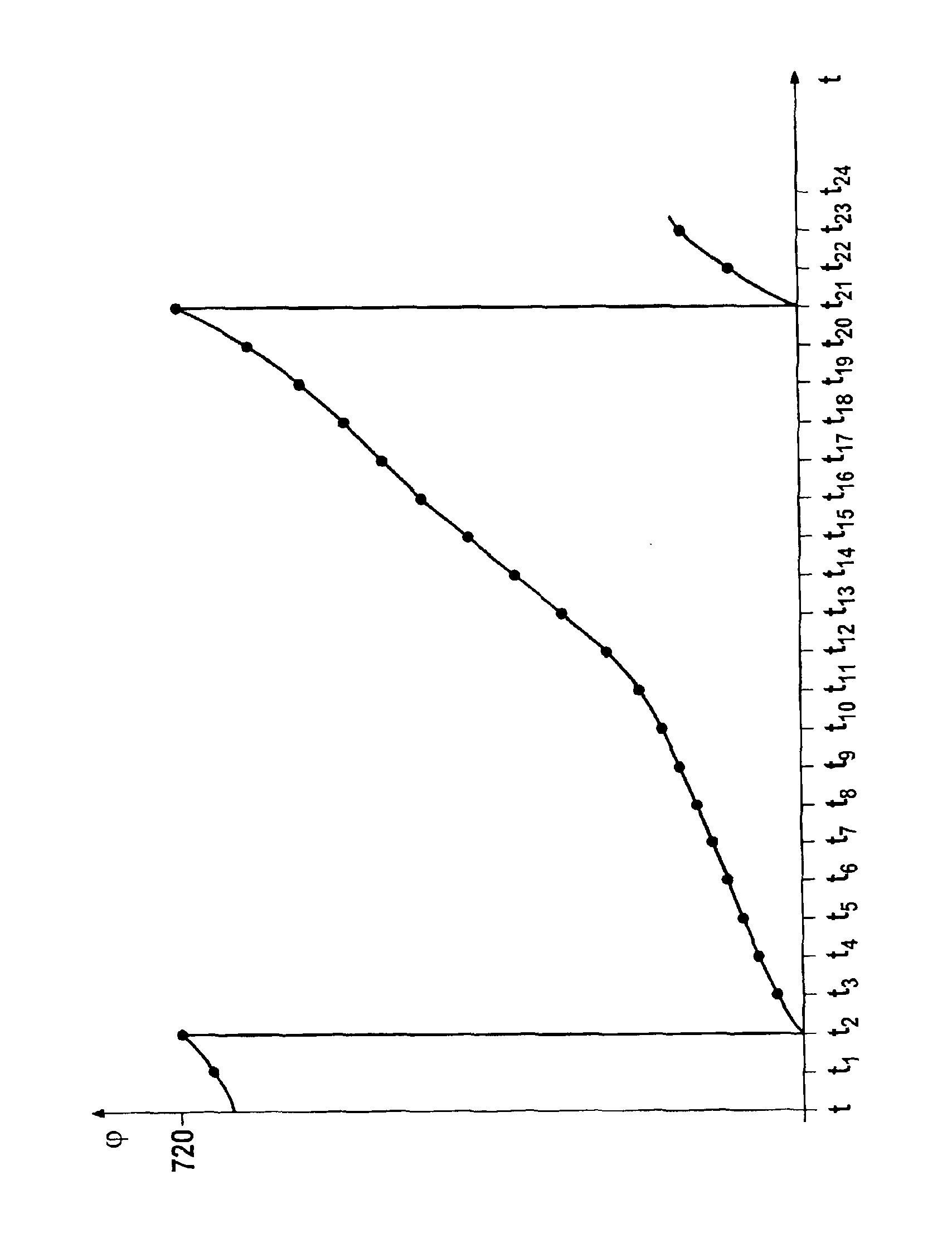Method of determining the crankshaft position of an internal combustion engine
a crankshaft position and internal combustion engine technology, applied in the direction of machines/engines, electrical control, instruments, etc., can solve the problems of limited maximum number of reference marks, no significant increase in the number of reference marks situated on the sensor wheel, and the method described, so as to achieve further improvement of the result of extrapolation and the effect of extrapolation
- Summary
- Abstract
- Description
- Claims
- Application Information
AI Technical Summary
Benefits of technology
Problems solved by technology
Method used
Image
Examples
Embodiment Construction
[0012]A sensor wheel having (60-2) or (36-2) angle marks in the form of teeth is frequently used in practice for the rotational speed detection at the crankshaft. This sensor wheel is permanently attached to the crankshaft, thus rotating with it. The angle marks are scanned by a crankshaft sensor which, for example, operates inductively, magnetoresistively, or utilizes the Hall effect. Each angle mark of the sensor wheel thus represents a defined crankshaft position. The output signal of the crankshaft sensor is transformed into a square-wave signal, each rectangular pulse reflecting the appearance of an angle mark and thus a defined crankshaft position. During normal operation, the ignition and injection operations are triggered as a function of the crankshaft position and the speed with which the crankshaft rotates. For this purpose, the angle marks detected by the crankshaft sensor are counted. The ignition and injection operations are then triggered as a function of the counter ...
PUM
 Login to View More
Login to View More Abstract
Description
Claims
Application Information
 Login to View More
Login to View More - R&D
- Intellectual Property
- Life Sciences
- Materials
- Tech Scout
- Unparalleled Data Quality
- Higher Quality Content
- 60% Fewer Hallucinations
Browse by: Latest US Patents, China's latest patents, Technical Efficacy Thesaurus, Application Domain, Technology Topic, Popular Technical Reports.
© 2025 PatSnap. All rights reserved.Legal|Privacy policy|Modern Slavery Act Transparency Statement|Sitemap|About US| Contact US: help@patsnap.com


